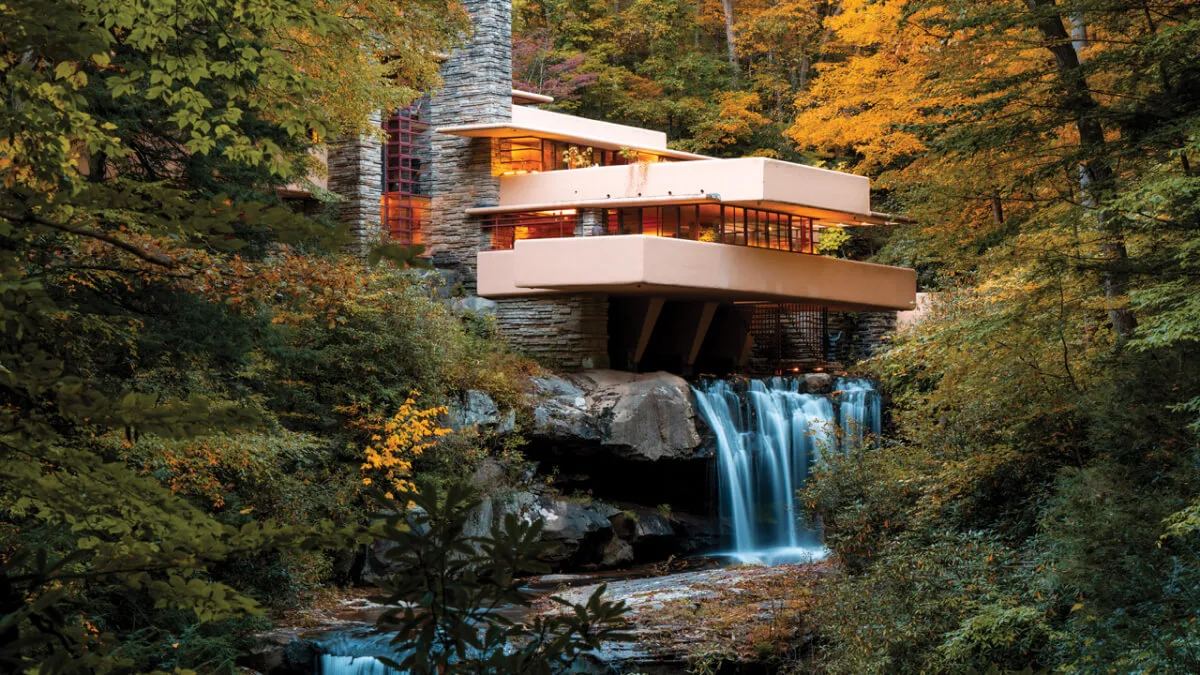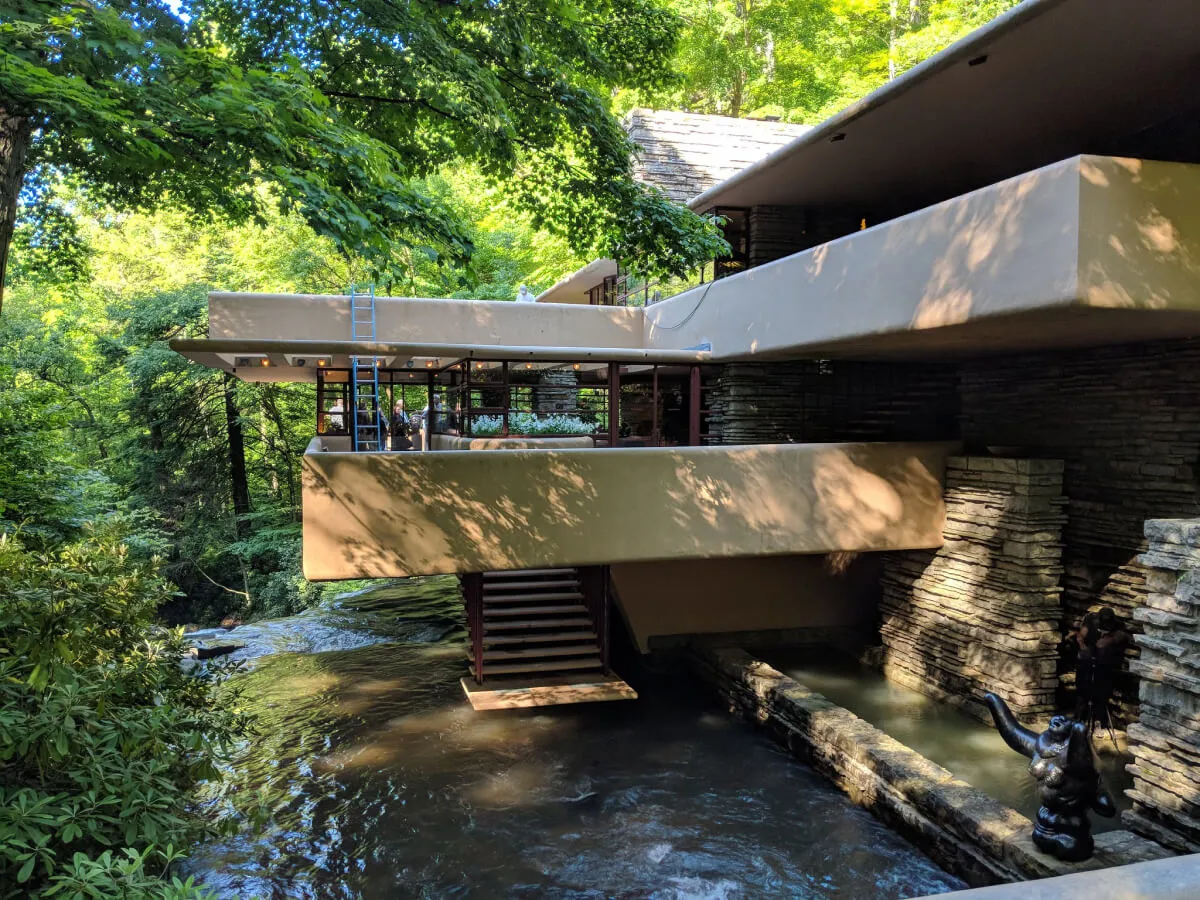Fallingwater: Frank Lloyd Wright's Masterpiece of Organic Architecture
Perched above a cascading waterfall in rural Pennsylvania stands a house that forever changed modern architecture. Fallingwater, designed by Frank Lloyd Wright in 1935, isn't just a structure — it's a bold philosophical statement about the harmonious relationship between human habitation and nature. This masterpiece continues to captivate architects, designers, and visitors from around the world, teaching us valuable lessons about organic architecture and sustainable design.

The Revolutionary Vision Behind Fallingwater
When Pittsburgh department store magnate Edgar Kaufmann commissioned Wright to design a weekend home, he expected a house with a view of the waterfall on Bear Run. Instead, Wright proposed something revolutionary: a home that would make the waterfall an integral part of the residents’ daily life. This bold decision perfectly embodied Wright’s organic architecture philosophy, where buildings don’t simply occupy a site but become one with it.
The project wasn’t without its challenges. Wright’s cantilever design, which appears to float above the waterfall, required innovative structural solutions. Working closely with engineers, Wright developed a sophisticated reinforced concrete system that would support the dramatic overhanging terraces while maintaining the illusion of weightlessness. This technical achievement alone makes Fallingwater a milestone in architectural history.
Natural Integration and Design Innovation
The true genius of Fallingwater lies in its seamless merger with its surroundings. The home’s horizontal lines echo the natural ledge rock of the site, while its vertical elements mirror the surrounding trees. Native sandstone quarried from the property forms the building’s core walls, creating a direct material connection to the landscape. Inside, spaces flow organically, with Wright’s characteristic compression and release techniques creating dramatic spatial experiences.
The innovative use of materials further enhances this connection to nature. Reinforced concrete cantilevers seem to defy gravity, while steel window frames painted “Cherokee red” frame views like artwork. Glass walls dissolve boundaries between inside and outside, and built-in furniture crafted from walnut adds warmth to the interior spaces. Even more remarkable is how Fallingwater incorporated sustainable features decades before sustainability became a mainstream concern.
Inside, Wright’s holistic approach to design shines through every detail. Built-in furniture eliminates the need for excessive decorative elements, while the color palette draws directly from the surrounding landscape. The living room’s waxed flagstone floor extends to an outdoor terrace, creating a seamless transition between interior and exterior spaces. Wright carefully considered every element’s placement, from the hearth’s location to the positioning of art pieces from the Kaufmann’s extensive collection.

Legacy and Modern Influence
In 1963, Edgar Kaufmann jr. made the visionary decision to entrust Fallingwater to the Western Pennsylvania Conservancy. Since then, numerous restoration projects have ensured the building’s preservation, including a major structural reinforcement of the cantilevers in 2002. Today, Fallingwater welcomes over 160,000 visitors annually, offering tours that provide an immersive experience in Wright’s masterwork.
Fallingwater’s influence extends far beyond its physical presence. Contemporary architects and designers continue to draw inspiration from its innovative approach to environmental integration, use of local materials, indoor-outdoor connections, and sustainable building practices. It stands as a testament to the possibility of creating buildings that enhance rather than dominate their natural settings.
As we face growing environmental challenges and seek more sustainable ways to live, Fallingwater’s lessons become increasingly relevant. It shows us that architecture at its best doesn’t just solve practical problems — it creates harmony between human needs and natural systems. In doing so, it continues to inspire new generations to think differently about how we can live in balance with the natural world.
For those inspired to visit this architectural marvel, advance reservations are strongly recommended. The experience of seeing Fallingwater in person — hearing the sound of the waterfall, feeling the interplay of light and shadow, and experiencing the seamless flow between indoor and outdoor spaces — offers insights that no photograph or description can fully capture.

Learn more about Fallingwater:

